Baltimore’s Annual Healthy Harbor Report Card
Bill Dennison ·Along with Caroline Wicks from the Integration and Application Network, I attended the release of the 2013 Baltimore Harbor report card on 28 May. The Integration and Application Network team developed the initial report card a couple of years ago, working closely with the Waterfront Partnership of Baltimore and Blue Water Baltimore and still provide data analysis support for the Baltimore Harbor report card.
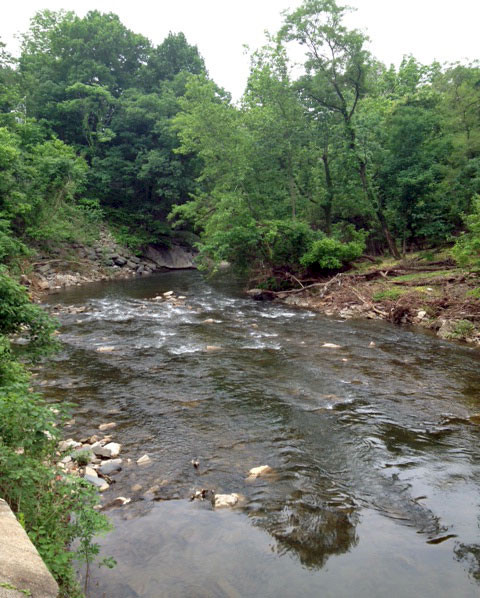
The release was located at a very interesting location on Jones Falls, Mill No. 1. An urban renewal project is occurring at the site of an old cotton mill which is in the restored mill building, and which actually spans the waterway via two pedestrian bridges. The facilities include apartments and office space in what was historically the Mount Vernon Mills, a cotton mill. Since river restoration is synergistic with urban renewal and increased access and visibility of the river, I was happy to see the Mill No. 1 project and catch the excitement about the revitalization taking place.

Adam Lindquist, Healthy Harbor Manager of the Waterfront Partnership of Baltimore, was the first speaker. Adam acknowledged the diverse partners represented at the report card event and served as Master of Ceremonies. He introduced Halle Van der Gaag, Executive Director of Blue Water Baltimore, an organization created in 2010 as a merger of five separate organizations (Jones Falls Watershed Association, Herring Run Watershed Association, Gwynn Falls Watershed Association, Baltimore Harbor Watershed Association, and Baltimore Harbor WATERKEEPER). Halle spent five years as the Director of the Jones Falls Watershed Association, so she introduced us to the river just behind the speaker’s podium. Halle and Adam revealed the 2013 report card cover, with the large “F” grade superimposed on the photograph of kayakers on Gwynns Falls with trash and litter on the riparian trees.
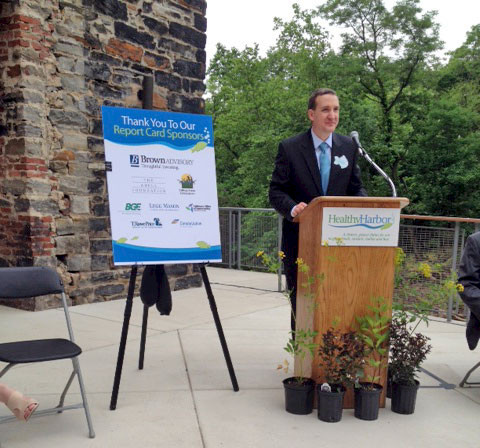
Halle also talked about the tougher grading scale employed this year, with 60% as the threshold for a passing grade. While we use a less stringent grading scheme at the Bay-wide scale, in a small watershed with significant progress anticipated, we should see some upward movement in grades, which will provide positive reinforcement. At the Bay-wide scale, if we employed the more stringent grading scale, we would not likely see improving grades for decades.
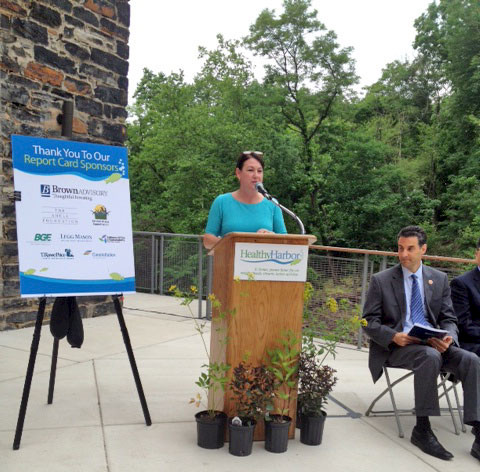
Rudy Chow, Director of the Baltimore City Department of Public Works, spoke passionately about how he did not want to continue to receive a failing grade. He highlighted some of the projects supported by the new storm water fee aimed at reducing the trash and litter entering the waterways, the sewage treatment upgrades underway for the two largest facilities in Baltimore (Patapsco and Back River facilities), and the intensified street sweeping to remove dirt, pet waste and litter.
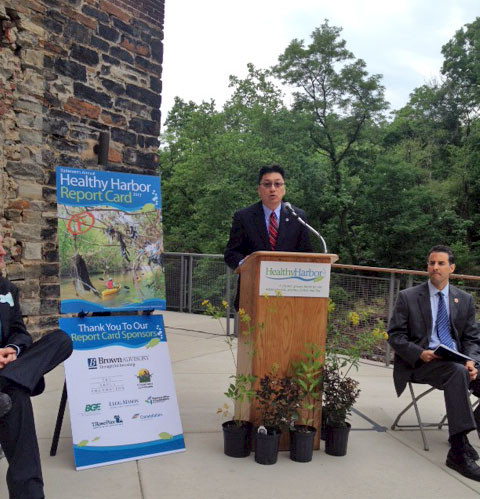
John Sarbanes, U.S. congressman, talked about the importance of developing a stewardship ethic for the 17 million inhabitants of the Chesapeake Bay watershed. While noting the sobering news associated with the 2013 report card, he applauded the goals of having a fishable and swimmable Baltimore Harbor by 2020. John also highlighted the bipartisan efforts to reauthorize the 1987 Clean Water Act.

Mike Hankin, President of Brown Advisory and Chair of the Waterfront Partnership of Baltimore, promised to be the first person to swim across Baltimore Harbor in 2020. Mike warned us of the early frustration of the restoration effort, with slow initial progress followed by more rapid progress. He mentioned that he lives and works adjacent to Baltimore Harbor and can see more bird life than ever before, an early sign of progress. He also pointed out the new water wheel, installed 3 weeks ago has already removed 25 tons of litter from the Jones Falls confluence into Baltimore Harbor. The 800,000+ views of the short video of the water wheel operating during a rainstorms was testament to the “Newest members of the coalition to restore Baltimore Harbor”, referring to the young people who are impatient and unsatisfied with the condition of the harbor.
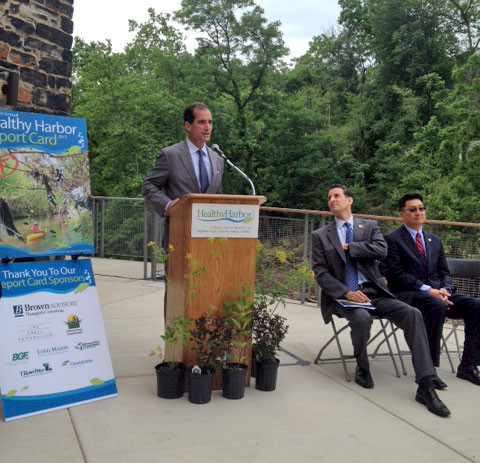
My take on the Baltimore Harbor report card was several-fold. The Patapsco and Back Rivers reporting region received the worst grade (F) of the fifteen reporting regions in 2013, a typical result. But what is particularly significant about failing grade for this region, is that the data are actually improving and the trajectory is for improved grades. In particular, the major improvements in sewage treatment capacity now underway for the two largest facilities; Patapsco and Back River sewage treatment plants, bodes well for future report card scores. In addition, the creation of better storm water runoff results using a variety of innovative approaches (e.g., green roofs, replacing schoolyard blacktop with grass, rain gardens, storm water conveyances, etc.) will lead to better water quality. Baltimore is becoming a hotbed of innovation, with floating wetlands and the water wheel in the harbor and the storm water initiatives in the watershed.
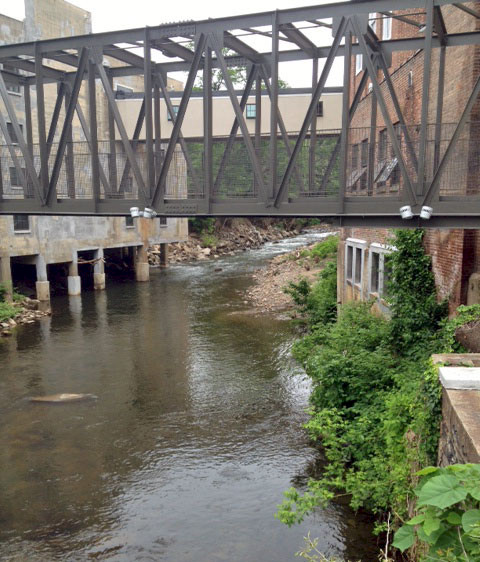
If the energy and enthusiasm, coupled with the support of the City and County of Baltimore, supported by Maryland and the federal government, engaging with NGOs and private business continues, I, too, will be swimming across Baltimore Harbor in the not-too-distant future.
About the author
Bill Dennison

Dr. Bill Dennison is a Professor of Marine Science and Vice President for Science Application at the University of Maryland Center for Environmental Science.

